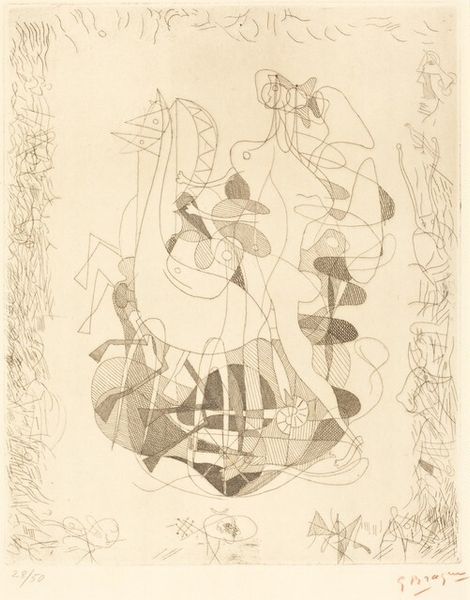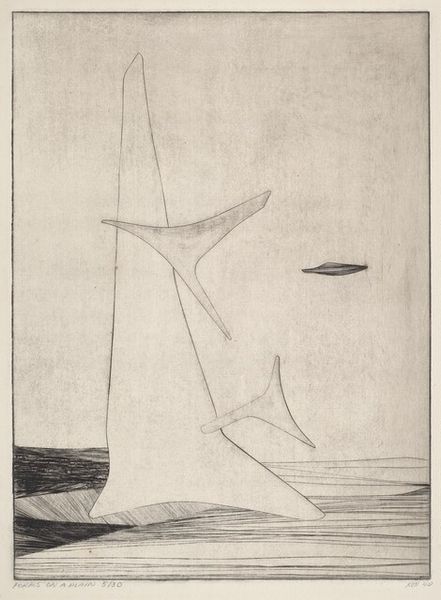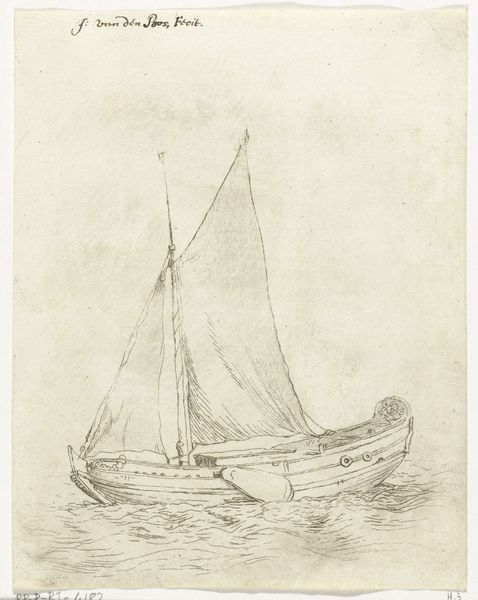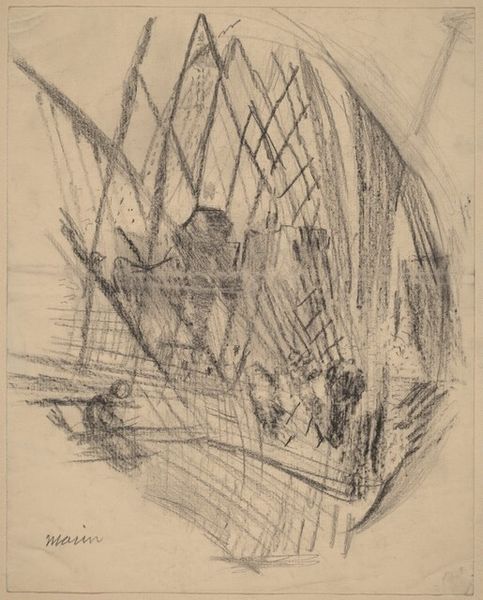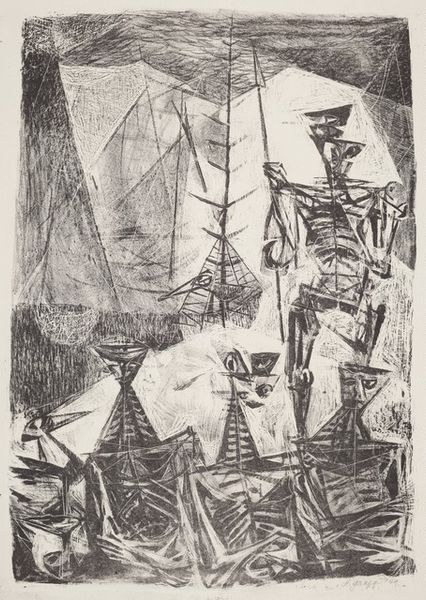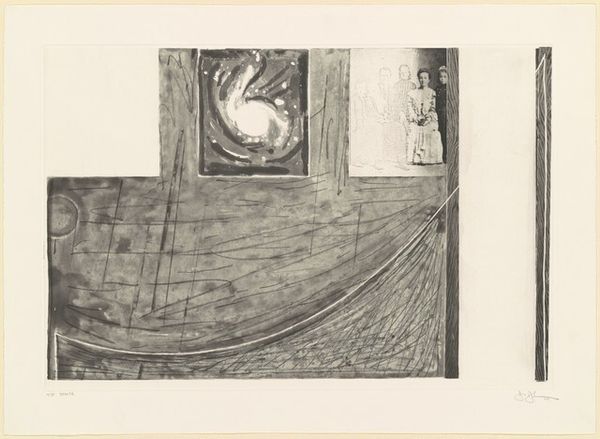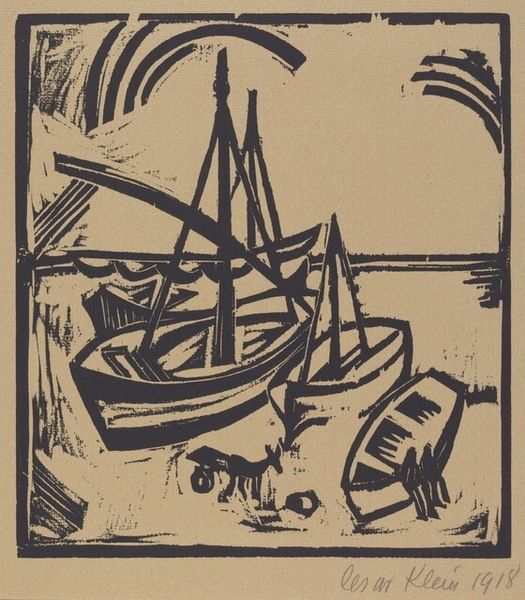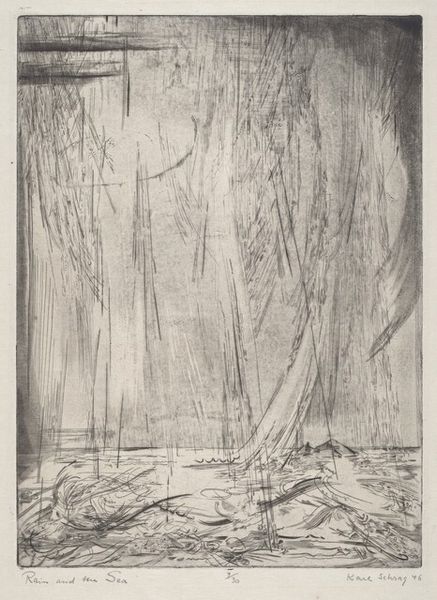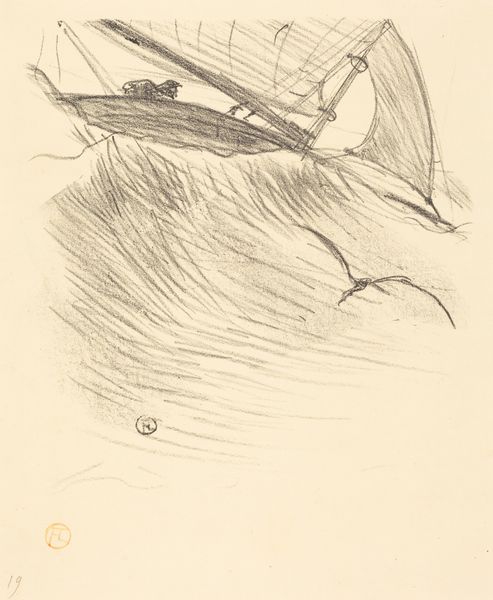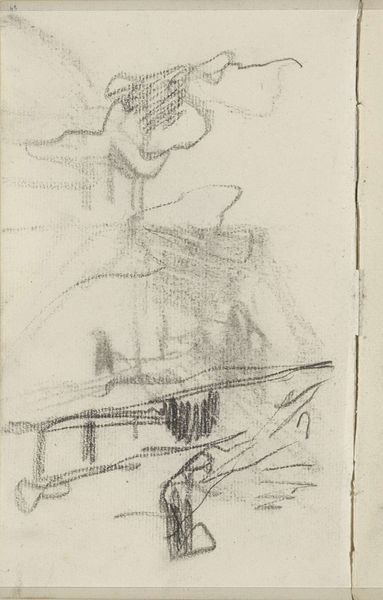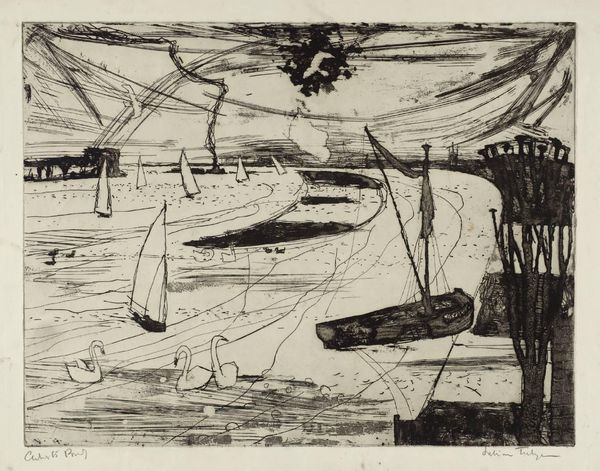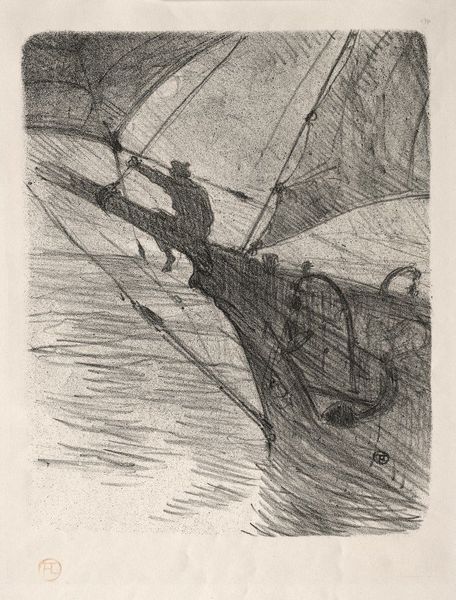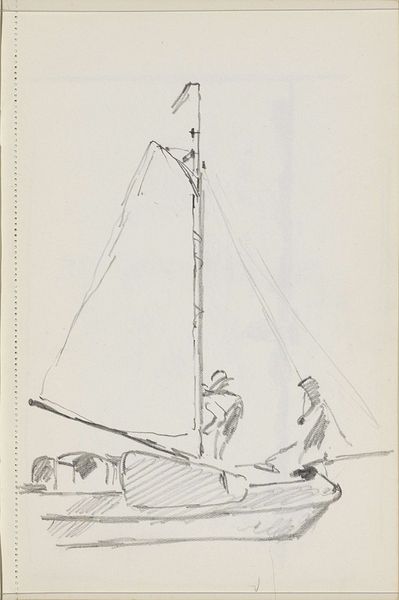
drawing, print, etching, ink
#
drawing
# print
#
etching
#
landscape
#
ink
#
line
#
realism
Copyright: National Gallery of Art: CC0 1.0
Curator: Andre Dunoyer de Segonzac's etching, "La Tartane," created sometime between 1929 and 1932, offers a glimpse into a world framed by the artist's unique perspective. Editor: There’s a quiet melancholy about it. The scene, framed almost like a stage set, uses very sparse lines and creates a real sense of depth despite the simplicity of the composition. Curator: The "stage set" framing is critical. Segonzac uses curtains on one side and what looks like a window frame on the other to create an intimate theater. Note how that adds a sense of voyeurism and anticipation as if we're about to witness a symbolic drama. The tartane, or small boat, functions as a vessel—perhaps of memory. Editor: The boat feels both present and absent, simultaneously solid through those heavy lines around the hull but insubstantial like a ghost because of all of that open line work above. Then, the collection of barrels... They suggest preparation for a journey, or perhaps the remains of a journey completed. Curator: Precisely! Barrels have carried wine, oil, and precious commodities throughout history. In the context of a small fishing vessel, it symbolizes sustenance and commerce—connecting this personal scene to broader themes of survival. Think of how maritime culture reflects our reliance on both trade and fate, where those little boats carried entire communities. Editor: And consider how those near parallel lines of the masts and the framing device seem to intentionally disrupt and guide the eye. It creates a tension—like you can't quite focus, adding to that dreamy state. What could feel stable isn’t, creating a lovely visual anxiety in an otherwise very simple picture. Curator: It makes you think. This blend of reality and staged setting offers such potent insights, reflecting how symbols continue shaping how we view our human narrative. Editor: It does change how you look at an image; all it takes is a few well-placed lines to change perspective and shift how you perceive objects and history.
Comments
No comments
Be the first to comment and join the conversation on the ultimate creative platform.
